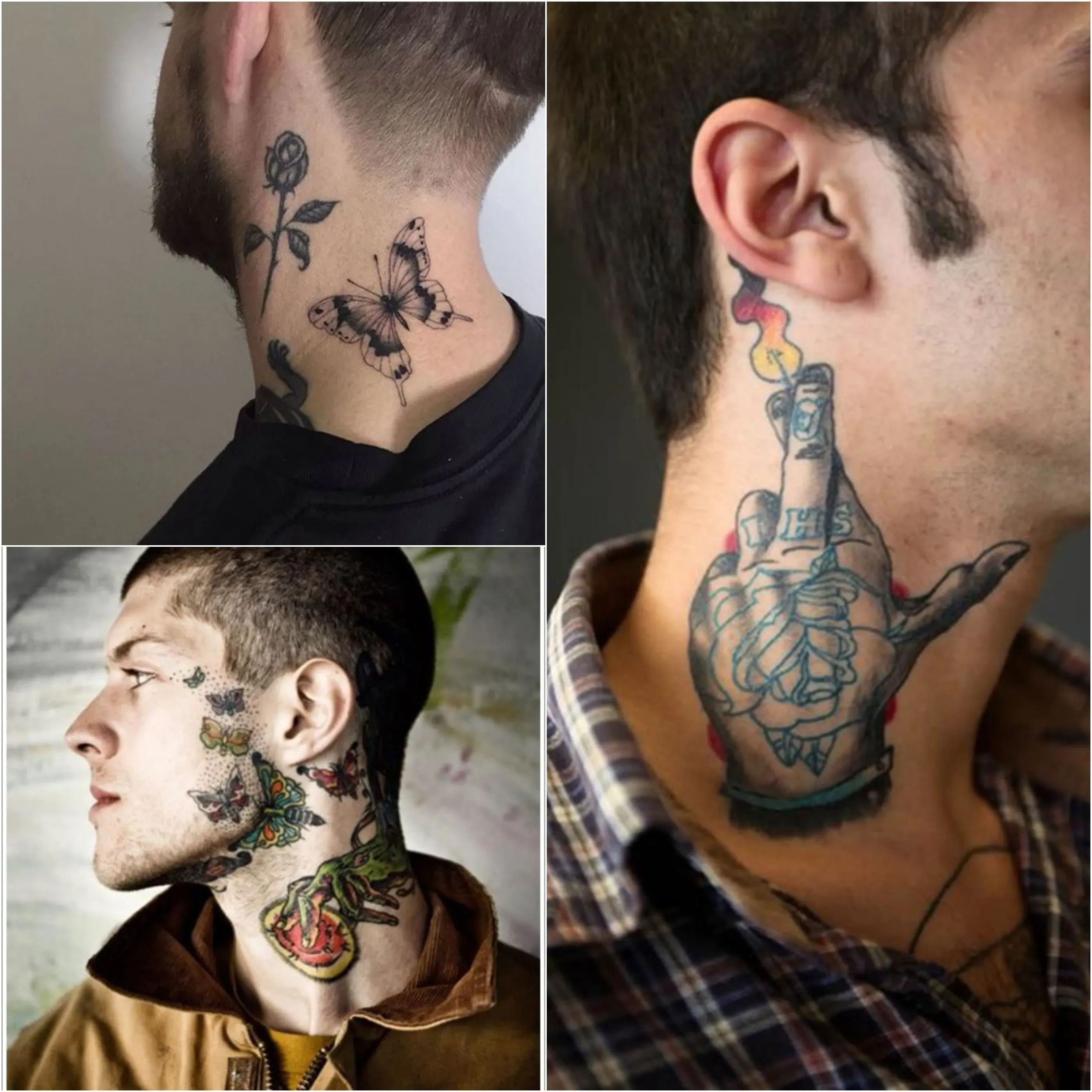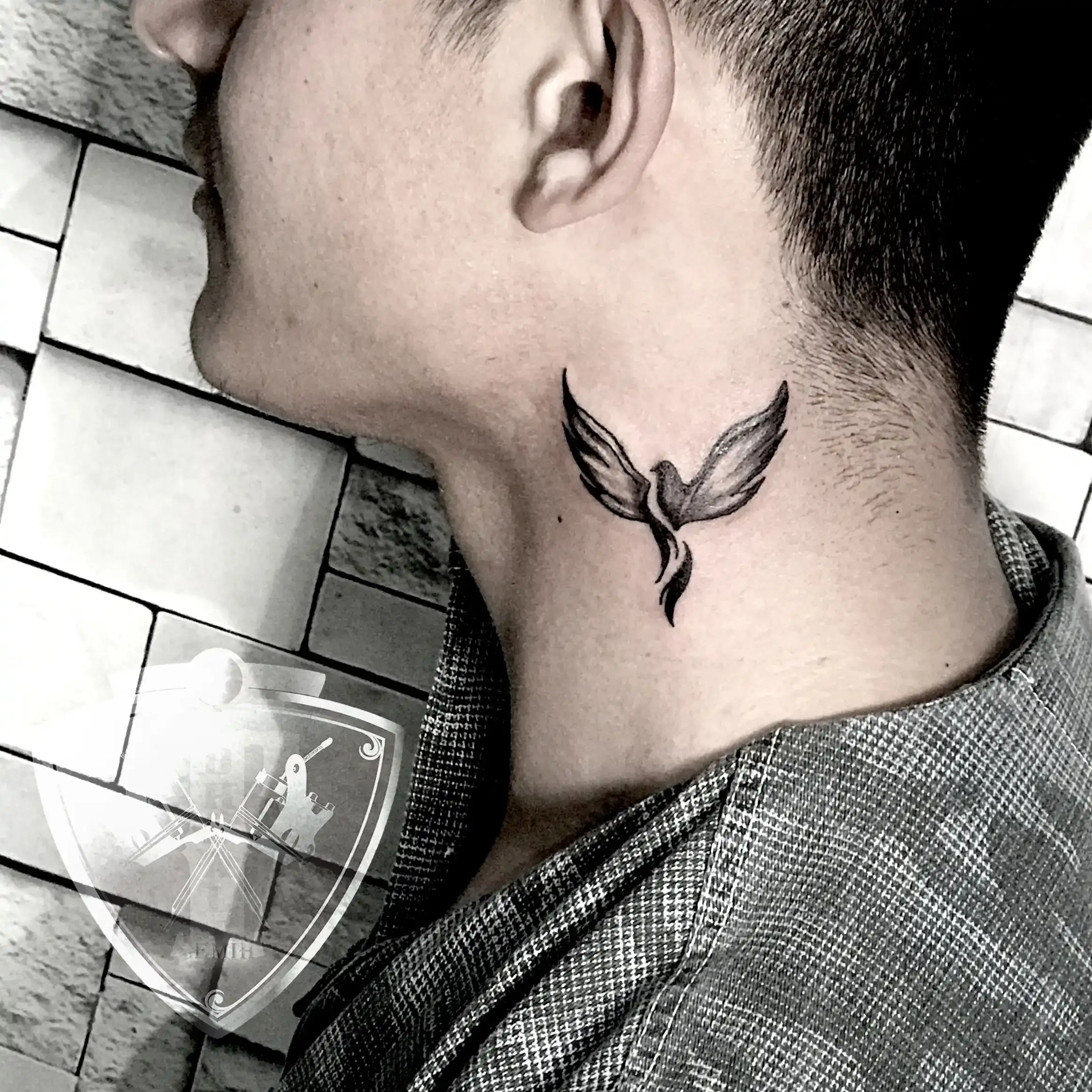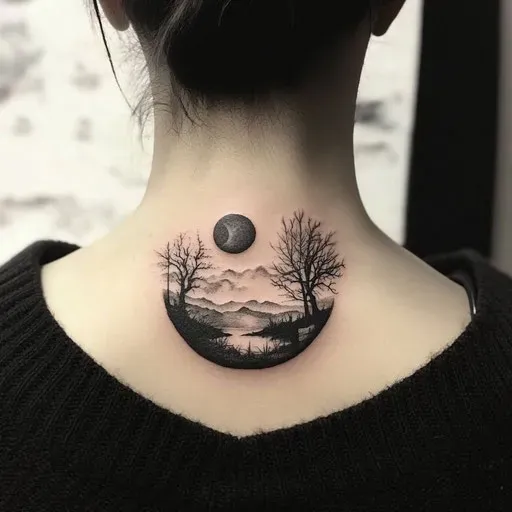Table of Contents
Choosing the spot for a new tattoo is a big deal, and the neck? That's arguably one of the boldest canvases you can pick. There’s something undeniably striking about ink visible right there, front and center, or subtly peeking from behind an ear. It makes a statement, whether loud or whispered. As more people embrace visible body art, the interest in unique and meaningful tattoo designs in neck placements is steadily climbing. It's not a decision made lightly; this area is sensitive, visible, and requires careful thought about design, placement, and what comes after the needle touches skin. This article digs into why someone might choose this prominent location, explores a range of captivating tattoo designs in neck areas, from delicate scripts to powerful symbols, and walks you through the realities of getting inked here – the pain factor, the healing process, and what to consider before you commit to this eye-catching spot.
The Bold Statement: Why Choose a Neck Tattoo?
The Bold Statement: Why Choose a Neck Tattoo?
Visibility and Impact: Hard to Ignore
Let's be honest, a neck tattoo isn't exactly subtle. It's right there, often one of the first things people see. Choosing to ink your neck is deciding you're okay with your art being on display, maybe even sparking conversations or raising eyebrows. It’s a prime piece of real estate for body art, situated high up and frequently uncovered. Unlike a back piece hidden under clothes or a foot tattoo nobody sees, this spot demands attention. People choose it precisely for that reason – they want their message, their art, or just their cool design to be visible. It's a commitment to wearing your story or aesthetic openly, a personal billboard of sorts.
More Than Skin Deep: Personal Significance
For many, the decision to get a tattoo on their neck goes beyond just wanting something visible. This spot is close to the head, often seen as a place for thoughts, identity, and voice. The designs placed here can carry deep personal meaning – symbols of strength, resilience, or reminders of core beliefs. It's not just about the shock value; it's about dedicating a highly visible spot to something profoundly important to the individual. It shows a level of conviction, a willingness to permanently display a part of their inner world on their outer self. It’s a bold declaration of self.
- Neck tattoos are a highly visible form of self-expression.
- Placement signifies a strong commitment to the chosen design's meaning.
- They often spark curiosity and conversation.
- Choosing this location is a deliberate act of making your art public.
Pushing Boundaries or Pure Aesthetics?
Historically, neck tattoos carried certain connotations, often associated with specific groups or counter-culture movements. While those perceptions are slowly shifting, getting a neck tattoo can still feel like pushing against more conservative norms for some. For others, it's purely about the aesthetic appeal – the shape of the neck offers unique possibilities for design flow, whether it's a delicate line following the curve or a larger piece wrapping around. The motivation varies wildly, from making a definitive statement against conformity to simply loving how a specific tattoo design looks in that particular location. It’s a mix of personal conviction and artistic appreciation.
Exploring Diverse Tattoo Designs in Neck Placement
Exploring Diverse Tattoo Designs in Neck Placement
Finding Your Fit: Small and Subtle vs. Big and Bold
When you're considering tattoo designs in neck areas, the sheer variety can be a bit overwhelming. It's not just one spot; you've got the front, the sides, the back, right behind the ear. Each offers a different canvas and vibe. Small, delicate designs like single words, tiny symbols, or fine-line botanical elements work well behind the ear or on the side, offering a hint of ink that can be easily covered or shown off. Think minimalist lines, a small bird, or a single significant date. These are the whispers of neck tattoos.
Then there are the louder statements. Larger pieces can wrap around the throat, extend up the back of the neck into the hairline, or sweep across the collarbone area. These often incorporate more complex imagery – geometric patterns, animal motifs, or elaborate script. Choosing the right tattoo designs in neck placement depends heavily on how much visibility you want and the complexity of the art itself. A sprawling dragon might feel right on the back of the neck, while a simple star might be better tucked behind the ear.
Placement Matters: Front, Back, or Side Story?
The specific spot on the neck dictates a lot about the potential tattoo designs in neck. The front of the throat is a high-impact zone, often chosen for symmetrical designs, bold statements, or pieces that align with the body's center line. It's also notoriously sensitive. The sides offer more surface area and are popular for script that flows vertically, or designs that complement the natural curve of the neck and shoulder. Think vines, floral arrangements, or abstract shapes that follow the anatomy.
The back of the neck is perhaps the most common spot, offering a larger, flatter area suitable for a wider range of tattoo designs in neck. This area can handle everything from small, hidden symbols that peek out from under hair to large, intricate pieces that extend downwards towards the back. It's also slightly less painful for many compared to the front or sides. Understanding these spatial differences is key to selecting a design that not only looks good but also fits the specific contours and movement of the neck.
So, what design elements work best where?
- Behind the Ear: Small, simple shapes, single letters, tiny stars, minimalist symbols.
- Side of Neck: Vertical script, flowing lines, small animals, floral stems, abstract shapes.
- Front of Neck (Throat): Symmetrical designs, bold symbols, phrases, geometric patterns (often requires careful planning due to sensitivity).
- Back of Neck: Wider range, from small symbols to large portraits, mandalas, script, animal heads, anything that fits the vertical space.
Popular Styles and Meanings in Tattoo Designs in Neck
Popular Styles and Meanings in Tattoo Designs in Neck
What's Trending and Why It's There
So, you're thinking about joining the neck tattoo club? Smart move. Now for the fun part: what kind of ink screams "you" on that prime piece of real estate? When it comes to tattoo designs in neck placements, some styles just show up more often, and usually, there's a reason. Script tattoos are huge – phrases, names, single words that mean the world. They fit the vertical flow of the neck nicely. Minimalist designs, like simple geometric shapes or fine lines, also land here frequently, offering a clean, modern look that doesn't overpower the area. And then you see a lot of symbolic stuff – birds taking flight, compasses pointing the way, simple floral elements, or even small animal profiles. These aren't just random pretty pictures; they often carry weight, representing freedom, direction, personal growth, or a connection to nature. People put these meanings right out there on their neck, a constant visual reminder to themselves and anyone who happens to glance their way.
Getting Your Tattoo Designs in Neck: Pain, Aftercare, and More
Getting Your Tattoo Designs in Neck: Pain, Aftercare, and More
Bracing for the Sting: The Pain Factor
Alright, let's talk about the part nobody *really* wants to talk about but everyone asks about: the pain. Getting tattoo designs in neck isn't like getting a little daisy on your ankle. This area is packed with nerve endings, and the skin is thin, especially around the front and sides. People often describe it as intense, a sharp, vibrating sting rather than a dull ache. The back of the neck can be a bit more forgiving, but it's still not a walk in the park. How bad it is really depends on your personal pain tolerance, the specific spot, and the artist's technique. Some folks grit their teeth and power through, others swear by numbing creams (check with your artist first!). Don't expect a spa experience; expect it to be uncomfortable, maybe even downright painful, but usually manageable for the duration of the session.
Healing Up Right: Essential Aftercare
So, you survived the needle and you've got your stunning tattoo designs in neck. Now the real work begins: healing. Proper aftercare is non-negotiable, especially in an area that moves constantly and is exposed to the elements. Your artist will give you specific instructions, but generally, it involves keeping it clean with a mild, unscented soap and applying a thin layer of recommended ointment or lotion. Avoid tight collars, scarves, or anything that rubs against the fresh ink. Sleeping can be tricky; try to keep the tattoo off the pillow if possible. Sun exposure is a major no-no during healing and should be limited even afterward with high SPF sunscreen. Neglect the aftercare for your tattoo designs in neck, and you risk infection, poor healing, and a patchy, faded result that doesn't do your cool design any justice.
Quick tips for neck tattoo aftercare:
- Listen to your artist's specific instructions.
- Wash gently with unscented soap.
- Apply a thin layer of recommended aftercare product.
- Avoid tight clothing or accessories around the neck.
- Protect from direct sunlight during healing and beyond.
- Try not to sleep directly on the tattoo.
- Be patient; healing takes time.
Final Thoughts on Neck Tattoos
Putting ink on your neck isn't like getting a little butterfly on your ankle that you can easily hide. It's a deliberate choice for a highly visible spot, one that prompts reactions and conversations, wanted or not. We've looked at the range of tattoo designs in neck locations, from minimalist lines to complex pieces, each carrying its own weight and meaning for the wearer. The appeal is clear – it's a bold form of self-expression, impossible to ignore. But the practicalities remain: the sensitivity of the skin, the healing process, and how this visible art integrates with your daily life and career. Choosing a neck tattoo means accepting that it's a permanent part of your public identity. It requires finding a skilled artist who understands the unique challenges of this area and being prepared for the reality of the experience, not just the cool finished product. It's a commitment, plain and simple.